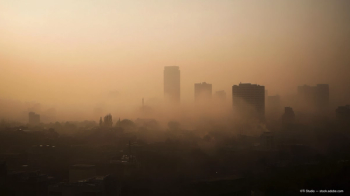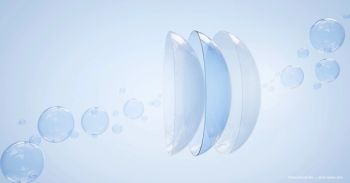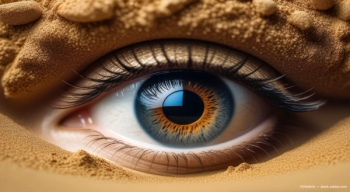
COVID-19: Masking the issue of dry eye
Wearing a face mask can help slow the spread of COVID-19, and may also lead to a spike in cases of dry eye. The Centre for Ocular Research and Education at the University of Waterloo, Ontario, Canada, is advising eye care professionals on how to recognize and mitigate mask-associated dry eye.
Wearing a face mask effectively helps prevent the spread of coronavirus disease 2019 (COVID-19) and, ironically enough, also effectively creates more cases of dry eye.
The Centre for Ocular Research and Education (CORE) at the University of Waterloo, Ontario, Canada, is advising eye care professionals on how to recognize and mitigate mask-associated dry eye.
“Asking patients about their mask-wearing experiences and providing a few helpful tips takes little time and can make a substantial difference,” noted Lyndon Jones, FCOptom, PhD, director of CORE.
The mechanism of the development of dry eye is tied to the outward spread of air that the mask creates.
As the experts at CORE explained, exhaled air still needs to disperse; when a mask sits loosely against the face the likely route is upwards.
This forces a stream of air over the surface of the eye, creating conditions that accelerate tear film evaporation, leading to dry spots on the ocular surface and discomfort.
This scenario not only helps dry eye to develop, but also exacerbates pre-existing dry eye.
A large population of people can be affected, including elderly individuals who may already have poorer quality tear film. It also may affect contact lens wearers, and people who work for long periods in air-conditioning and use computers.
In addition, individual may rub their eyes to relieve the symptoms, which can help spread the virus to the face.
Suggestions for clinicians, patients
CORE advised clinicians to be aware of the connection between masks and dry eye and to talk with patients about how their eyes feel when a mask is worn.
An infographic was developed by CORE (available at COVIDEyeFacts.org) shows a few steps to provide relief of dry eye symptoms.
Some of the tips include appropriate mask wear with glasses, lubricating eye drops, less time in air-conditioning and taking breaks from the use of digital device, as well as consulting with eye care providers.
Jones emphasized the importance of responsibly wearing a mask despite to overcome the virus despite this newly recognized adverse effect.
He urges practitioners to communicate with patients and help them overcome the dry eye discomfort.
Newsletter
Don’t miss out—get Ophthalmology Times updates on the latest clinical advancements and expert interviews, straight to your inbox.













































